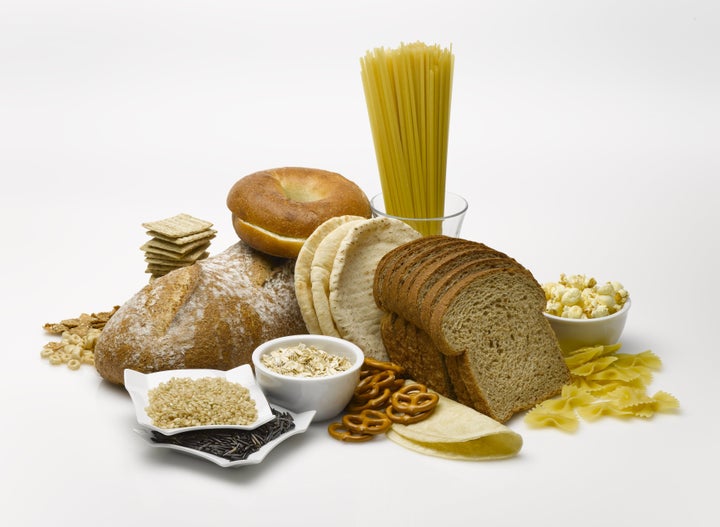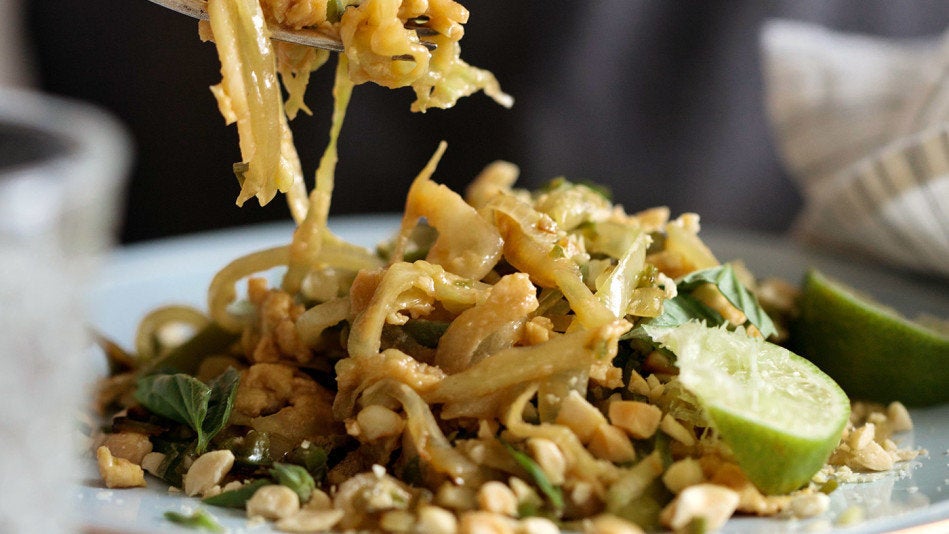
Carbohydrates don’t have a very good reputation these days. Fans of popular low-carb diets like Atkins, Paleo, South Beach Diet and Whole30 are convinced that cutting them out of your diet is the key to dropping pounds and keeping the weight off for good. About 29 percent of Americans said they were “actively” avoiding carbs in a 2014 Gallup poll, and recent scientific studies that compare low-carb diets to low-fat diets show that -- at least in the short periods they’re part of the study -- participants have more success losing weight and improving their health if they restrict carbs, not fat.
But at this point, we have to ask: Do people even know what a “carbohydrate” is anymore?
To make sure we’re all on the same page, here’s a quick break down. Carbohydrates are a group of foods made up primarily of fiber, starches or sugar. This food group includes fruits and vegetables, as well as grains like rice or oatmeal, and refined grains in cakes and cookies. As you can see, this category encompasses a wide range of different kinds of food, and not all carbs are equally nutritious. Nutrition expert Dr. Mark Hyman put it this way in a HuffPost blog: "A hot fudge sundae and cauliflower both fall into the ‘carbs' category, yet they are entirely different foods.”
Now that we’ve got that out of the way, know that nutrition experts think carbohydrates should make up 45 to 65 percent of our diet. Lots of those “carbs” should be vegetables and fruit, and most low-carb diets uncontroversially encourage people to eat more of their greens and yellows and reds as part of a balanced diet. We should eat about 2.5 cups of vegetables a day, as well as two cups of whole fruit.
But this “carb” category can also include grains as part of a healthy diet, and the more whole grains, the better. The 2015 Dietary Guidelines (the federal government’s guide to healthy eating) recommend that an adult eating about 2,000 calories a day can eat up to six ounces of grains a day, and that at least half of those grains should come from whole grains. To get a picture of what that looks like, one slice of bread or one half-cup of cooked rice is a one-ounce serving of grains.
University of Minnesota professor Joanne Slavin, a nutrition expert who consults on the Atkins Scientific Advisory board, says that the average American overeats grains, but that doesn’t make the food a “villain."
"Grains have been singled out as being the villains when they’re another source of calories,” says Slavin. "The public health [message] is to consume whole grains over refined grains, rather than eat more grains."
The easiest way to eat 100 percent whole grains is to just eat the grains themselves -- things like whole oats, brown rice, quinoa and wild rice. These whole grains preserve the grain’s entire kernel, which include the endosperm, bran and germ. They contain dietary fiber, iron and other vitamins that are lost when these grains are processed into refined versions of themselves.
But sometimes whole grains are ground up and mixed into other products, like bread. If you want to choose a food made with whole grains, check out the ingredients list. The whole grain should be the first ingredient on the list (or second, if it comes after water). And for multigrain products, all of those whole grains should be crowding the front of that list.
The U.S. Department of Agriculture has a handy list of sneaky food marketing terms that should warn you away from products that aren't made from 100 percent whole grains. They include claims like:
100 percent wheat
Contains whole grain
Made with whole grain
Made with whole wheat
Contains whole grain
7 grains
Finally, refined grains (which have the bran and germ removed) don't have as much vitamins, minerals or fiber as the unprocessed versions of themselves, and are often mixed in with things like added sugar, sodium and saturated fats to make things like cookies, cakes, pastries and other kinds of junk food. These are the kinds of carbs we should be eating less of.
So the next time you want to skip “carbs” to try to eat healthier, ask yourself: are these grains refined, in which case it wouldn’t a bad idea to skip them? Or are they whole grains, and you’re unnecessarily guilting or shaming yourself into doing without, simply because they are a “carb?"
Keep in mind that the dietary guidelines are recommendations for the general population. But Sports Nutrition expert Jackie Buell at The Ohio State University Wexner Medical Center says that people with prediabetes, type 2 diabetes, or risk markers for metabolic syndrome like a large midsection might benefit from a more personalized diet that cuts back on carbohydrates in grains, fruits and added sugars in order to balance blood sugar levels.
Do you want to be more mindful about eating healthy foods that’ll keep your mind and body at their best? Sign up for our newsletter and join our Eat Well, Feel Great challenge to learn how to fuel your body in the healthiest way possible. We’ll deliver tips, challenges and advice to your inbox every day.
